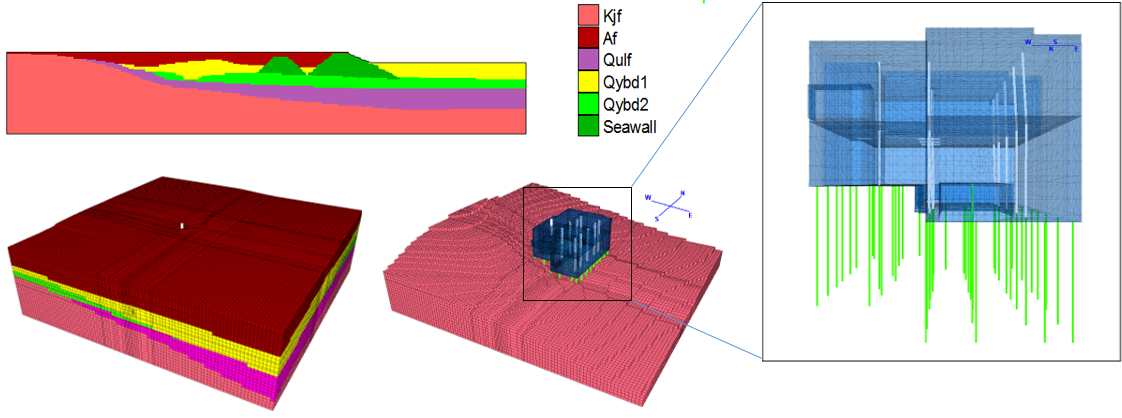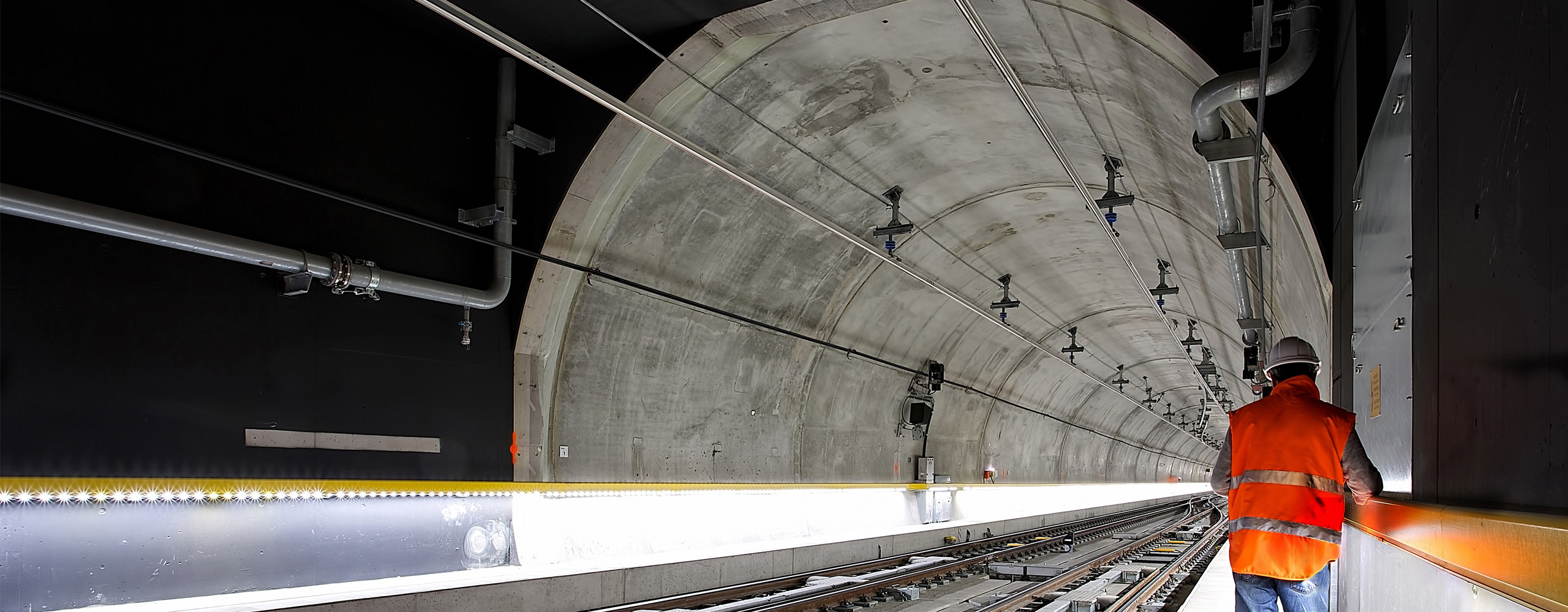Dynamic Soil Structure Interaction Analyses of North Shore Pump Station
Project Description
Located near Fisherman’s Wharf in San Francisco, North Shore Pump Station is a part of the North Point Wet-Weather Facility (NPF), which provides primary treatment for disinfection of wastewater. The facility is a two-story building that is completely embedded in soil, and the subsurface conditions include potentially liquefiable sand layers and soft Bay Mud deposits sitting on bedrock sloping toward the east side waterfront. The building is supported by piers extending all the way into the Franciscan Complex bedrock.
A nonlinear seismic soil-structure interaction analysis was required to estimate racking displacements, in-structure response, and load on the west wall due to any lateral soil spreading. M2 Consultants contracted Itasca to develop the numerical models and test them for one ground motion.
Itasca's Role
Itasca first developed a larger extent two-dimensional FLAC model for an east-west cross-section without the pumping station to analyze free-field site response and estimate slope displacements during and after dynamic shaking to estimate the extent of lateral soil spreading. Potentially liquefiable soils were simulated using the Finn-Byrne model, whereas hysteretic damping was used for all other soil layers.
A three-dimensional FLAC3D model was then developed to conduct a nonlinear soil-structure interaction analyses. In addition to the pump station structure, the model included different geologic layers for Artificial Fill (Af), Young Bay Mud (Qybd 1 & 2), Upper Layered Sediments (Qulf), and Franciscan Complex (Kjf). The primary model used shell elements for walls and floors and pile elements for the piers. An additional model was also set up using zones for walls and floors for a sensitivity analysis. A customized function was used to simulate crushable foam along the West wall interface. The construction sequence was simulated by placement of shoring, excavation and dewatering, construction of the structure, application of hydrostatic loads (following dewatering), and finally, the triggering of the seismic event (ground motion).
Project Image(s)


